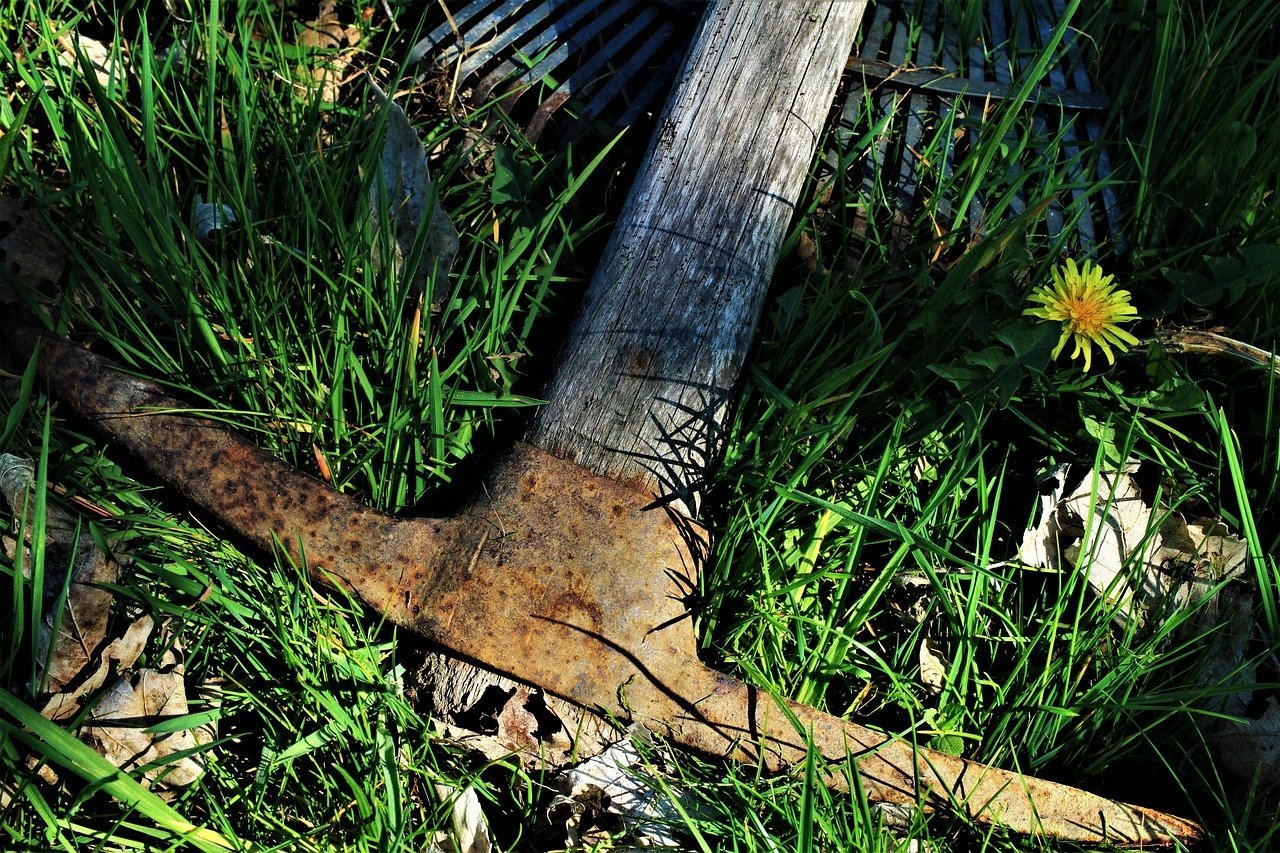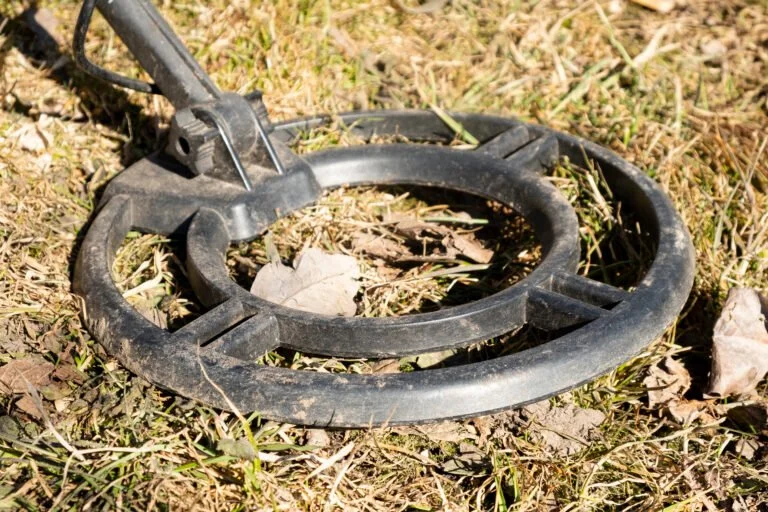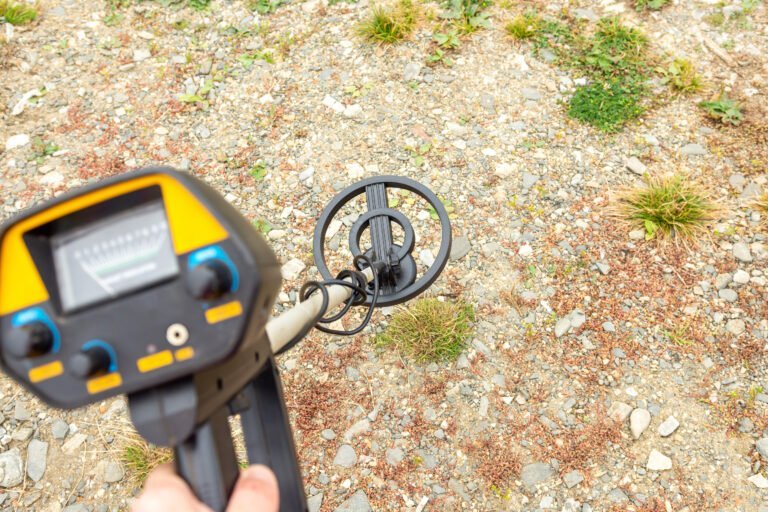Prospecting is a thrilling adventure that involves searching for hidden treasures and exploring the great unknown.
First Posted December 22, 2024 | Last Updated on July 29, 2025 by Ryan ConlonDisclosure: This Post Contains Affiliate Links; We earn a commission on purchases.
Whether you’re a gold enthusiast, a geological explorer, or a metal detector enthusiast, picks are your trusty companions in the world of prospecting.
Picks come in various forms, each serving a unique purpose in the prospecting journey.
From gold prospecting picks to geological picks, these tools are essential when it comes to unearthing valuable resources and uncovering geological wonders.
They are the backbone of your prospecting equipment, enabling you to dig, chip, and break through the ground to reveal the hidden treasures that lie beneath.
When it comes to metal detecting or geological exploration, the right pick can significantly enhance your efficiency and increase your chances of success.
It’s crucial to understand the features and functions of these picks to make informed decisions and optimize your prospecting endeavors.
Key Takeaways:
- Picks are vital tools in the world of prospecting, enabling treasure hunters and geological explorers to uncover hidden resources.
- They come in various forms, including gold prospecting picks, geological picks, and metal detecting picks.
- Picks serve as a means to dig, chip, and break through the ground, revealing the treasures or geological samples beneath.
- The right pick can greatly enhance the efficiency and success of your prospecting activities.
- Understanding the features and functions of picks is essential for selecting the right tool for your needs.
The Features of Picks in Prospecting
Picks used in prospecting are designed with specific features to meet the needs of prospectors. These features enhance the effectiveness and efficiency of prospecting activities, ensuring optimal results. Let’s explore some key features that make prospecting picks invaluable tools for treasure hunters and geologists alike.
Durable Picks
Durability is essential when it comes to prospecting picks. These picks are subjected to rigorous use, often in rugged terrains, and need to withstand the demanding conditions without compromising their performance. Durable picks are crafted using high-quality materials that can withstand the test of time, providing prospectors with reliable and long-lasting tools.
Ergonomic Picks
Prospecting can involve extended periods of use, and that’s where ergonomic picks come into play. Designed with the user’s comfort in mind, these picks feature ergonomically shaped handles that reduce strain and fatigue, allowing prospectors to work comfortably for longer periods. With ergonomic picks, prospecting becomes less physically taxing, ensuring a more enjoyable and productive experience.
Versatile Picks
When exploring different terrains and encountering diverse soil compositions, versatility is key. Versatile picks are designed to adapt to various types of soil and effectively break through different materials. They offer the flexibility needed to tackle different prospecting challenges, making them indispensable tools for geologists and treasure hunters.
Lightweight Picks
During long prospecting expeditions, the weight of equipment can become a burden. Lightweight picks solve this problem by being easy to carry and maneuver. They reduce fatigue and allow prospectors to explore extensive areas without being weighed down. Whether it’s a remote expedition or a day of treasure hunting, lightweight picks provide the convenience and agility required for successful prospecting.
By incorporating these features into their design, picks used in prospecting become indispensable tools for treasure hunters and geologists. The combination of durability, ergonomics, versatility, and lightweight design ensures that prospectors have reliable and efficient tools at their disposal.
Functions of Picks in Prospecting
In the world of prospecting, picks are invaluable tools that serve a multitude of functions. Whether you’re on the hunt for buried treasure or exploring geological formations, picks play a critical role in uncovering hidden resources. Let’s dive into the various functions of picks in prospecting:
Digging Picks
One of the primary functions of picks in prospecting is excavation. Digging picks are designed to penetrate the soil and unearth potential treasure or geological samples. With their strong and sturdy construction, these picks allow prospectors to dig deep and search beneath the surface.
Breaking Picks
When it comes to extracting valuable resources, breaking picks are a prospectors’ best friend. These picks are specially designed to tackle hard materials such as rocks or ice. By breaking through these rugged surfaces, prospectors can gain access to hidden resources and further their explorations.
Extracting Picks
Once you’ve located a valuable material or sample, extracting picks come into play. These picks are engineered to effectively extract materials from the ground. Their sharp and precise edges allow prospectors to carefully remove samples without causing damage.
Chipping Picks
Chipping picks are essential tools for revealing hidden treasures or geological formations. With their chisel-like shape, these picks are used to chip away at rocks and solid surfaces. By delicately removing layers, prospectors can unveil the beauty and richness concealed within.
Overall, the functions of picks in prospecting are varied and essential to successful and efficient exploration. These versatile tools empower prospectors to dig, break, extract, and chip their way to remarkable discoveries. By utilizing the right pick for each task, prospectors can maximize their chances of uncovering valuable resources and embarking on exciting adventures in the world of prospecting.
Types of Picks for Prospecting
When it comes to prospecting, there is a wide range of pick types available to suit the needs of different prospectors. Each type of pick offers unique features and benefits, making them suitable for specific tasks and terrains. Let’s explore some of the commonly used pick types in prospecting:
1. Geologist Picks (Rock Picks)
Geologist picks, also known as rock picks, are specifically designed for geological exploration. They feature a pointed end, making them ideal for effectively chipping rocks and minerals. Geologist picks are essential for prospectors who focus on conducting geological surveys and analyzing rock formations.
2. Mattock Picks
Mattock picks are versatile tools that feature a dual head design. One side of the pick has a sharp pointed end, while the other side has a flat blade. This combination allows prospectors to tackle various tasks such as digging, breaking through hard soil or rocks, and even chopping roots. The versatility of mattock picks makes them a popular choice among prospectors who require a multipurpose tool for their expeditions.
3. Point Picks
Point picks are characterized by their single pointed end, making them perfect for digging and breaking through compacted soil or rocks. These picks are commonly used by prospectors who need to excavate ground layers or access hidden resources. Point picks provide a focused point of impact, allowing for precise and efficient work.
Table: Comparison of Pick Types in Prospecting
| Pick Type | Features | Best For |
|---|---|---|
| Geologist Picks (Rock Picks) | Pointed end for effective rock chipping | Geological exploration |
| Mattock Picks | Dual head with a sharp pick and flat blade | Digging, breaking, chopping |
| Point Picks | Single pointed end for precision | Digging, breaking compacted soil or rocks |
As a prospector, it’s important to choose the right pick type based on your specific needs and the tasks you’ll be undertaking. Whether you’re conducting geological surveys, excavating soil, or breaking through hard rocks, selecting the appropriate pick type will greatly enhance your prospecting experience.
Choosing the Right Pick for Prospecting
When it comes to prospecting, selecting the right pick is crucial for achieving optimal performance and success. Prospectors should carefully consider several factors before making their pick selection. These factors include the type of terrain they will be exploring, the materials they expect to encounter, and their personal preferences and needs.
So, what should prospectors look for when choosing a pick?
Durability
One of the essential features to consider is durability. Prospecting can involve rigorous activities like digging in rugged terrain, and a durable pick is necessary to withstand the challenges. Look for a pick made from high-quality materials that can handle the demands of prospecting without wearing out quickly or breaking.
Ergonomics
Another important factor in pick selection is ergonomics. Ensuring that the pick is comfortable to handle and reduces strain on the user is key to prolonged use without fatigue. Look for picks with ergonomic designs and comfortable grip handles that allow for efficient and comfortable prospecting.
Versatility
Prospectors should also consider the versatility of the pick. Different terrains and materials may require specific pick features. Look for picks that are adaptable to various soil types and can effectively break through different materials. A versatile pick will enable prospectors to explore diverse locations and uncover potential treasures with ease.
Personal Preferences and Customization
Personal preferences also play a role in pick selection. Each prospector has their own unique style and techniques, and choosing a pick that aligns with their preferences can enhance their prospecting experience. Some prospectors may even choose to customize their picks by adding features or modifications to suit their specific needs.
Customization allows prospectors to make their picks truly their own and maximize their effectiveness.
By considering factors such as terrain, materials, personal preferences, and customization options, prospectors can choose the right pick that aligns with their needs and maximizes their prospecting success.
Maintenance and Care for Prospecting Picks
Proper maintenance and care are essential to ensure the longevity and performance of your prospecting picks. By following these tips, you can keep your picks in optimal condition for successful treasure hunting and geological exploration.
Cleaning Picks
To keep your picks in top shape, it’s important to clean them regularly. After each use, remove any dirt, debris, or corrosive substances that may accumulate on the metal surfaces. Use a brush or cloth to gently scrub away the buildup, paying attention to the pick’s head, point, and handle. Avoid using harsh chemicals or abrasive materials that could damage the pick’s integrity.
Sharpening Picks
Regularly sharpening your picks is crucial to maintain their effectiveness and efficiency in breaking through materials. A sharp pick will make your prospecting activities easier and more efficient. Use a sharpening stone or tool specifically designed for picks to restore the sharpness of the point or blade. Follow the manufacturer’s instructions and take care to maintain the correct angle while sharpening.
Storing Picks
Proper storage is key to preventing rust and other damage to your picks. After cleaning and drying your picks, store them in a dry and secure place. Avoid exposure to moisture, extreme temperatures, or direct sunlight, as these can deteriorate the metal surfaces. Consider using a pick storage rack or a sturdy case to protect your picks from accidental damage and keep them organized.
Regular Inspections
Regularly inspect your picks for signs of wear or damage that may require repairs or replacement. Check for any cracks, loose handles, or bent heads that may affect the pick’s performance. If you notice any issues, address them promptly to maintain the optimal performance of your picks.
Remember, proper maintenance and care will ensure that your prospecting picks remain reliable and durable tools for your prospecting endeavors.
Safety Considerations for Using Picks in Prospecting
While picks are essential tools in prospecting, ensuring safety during their use is of utmost importance. Proper pick handling techniques should be employed to minimize the risk of accidents or injuries. Wearing the appropriate protective gear, such as gloves, safety goggles, and sturdy footwear, is highly recommended to mitigate potential hazards.
Prospectors should consider the following safety measures when using picks in prospecting:
- Learn proper pick handling techniques to minimize accidents or injuries.
- Wear protective gear such as gloves, safety goggles, and sturdy footwear.
- Be aware of surroundings and potential hazards, such as loose soil, unstable rocks, or steep slopes.
By practicing proper safety measures, prospectors can minimize the risk of accidents and ensure a safe prospecting experience.
To emphasize the importance of pick safety, consider the following quote:
“Safety should always be prioritized when using picks in prospecting. Taking necessary precautions and wearing protective gear can make a significant difference in preventing accidents and ensuring a successful prospecting journey.”
– John Smith, Experienced Prospector
For a visual representation of pick safety, here is an image illustrating the use of protective gear:
Conclusion
Picks are indispensable tools in prospecting, serving critical functions in excavation, breaking, and extraction. By choosing the right pick, conducting regular maintenance, and prioritizing safety, prospectors can significantly enhance their prospecting endeavors, increasing their chances of successful treasure hunting or geological exploration. The unique features and functions of picks make them valuable assets in the prospecting process, empowering prospectors to reveal hidden resources and make remarkable discoveries. Whether it’s gold prospecting picks, geological picks, or metal detecting picks, selecting the appropriate pick can make a substantial difference in the effectiveness and efficiency of prospecting activities.
When prospecting with picks, it is crucial to consider various factors such as the type of terrain, materials encountered, and personal preferences to make an informed selection. Paying attention to features like durability, ergonomics, and versatility can further enhance the pick’s performance in the field. Regular pick maintenance, including cleaning, sharpening, and proper storage, is essential for long-term durability and efficiency. By practicing proper safety measures, utilizing protective gear, and being aware of potential hazards, prospectors can ensure a secure prospecting experience.
Picks are not merely tools; they are the pillars of successful prospecting. Their role in excavation, breaking, and extraction cannot be overstated. With the right pick, prospectors can unlock hidden treasures and reveal valuable geological samples. By giving due consideration to pick selection, maintenance, and safety, prospectors can elevate their prospecting activities to new heights, increasing their chances of making significant discoveries. Prospecting with picks is a journey full of excitement, and with the right tools and precautions, it is a journey that promises endless possibilities.
Source Links
- https://www.pipedrive.com/en/blog/prospectio-four-pillars-automate
- https://blog.hubspot.com/sales/prospecting
- https://ncmc.pubpub.org/pub/powerch7

Meet Ryan Conlon, the passionate owner and driving force behind Pan for Treasure.
With an unwavering love for the art of gold panning, Ryan has transformed his enthusiasm into a thriving community hub for fellow treasure seekers. info@panfortreasure.com
A seasoned gold panning enthusiast, Ryan’s journey began with a simple pan and a dream, evolving into a deep appreciation for the history, geology, and thrill of uncovering precious metals.
Subscribe to Our Newsletter







